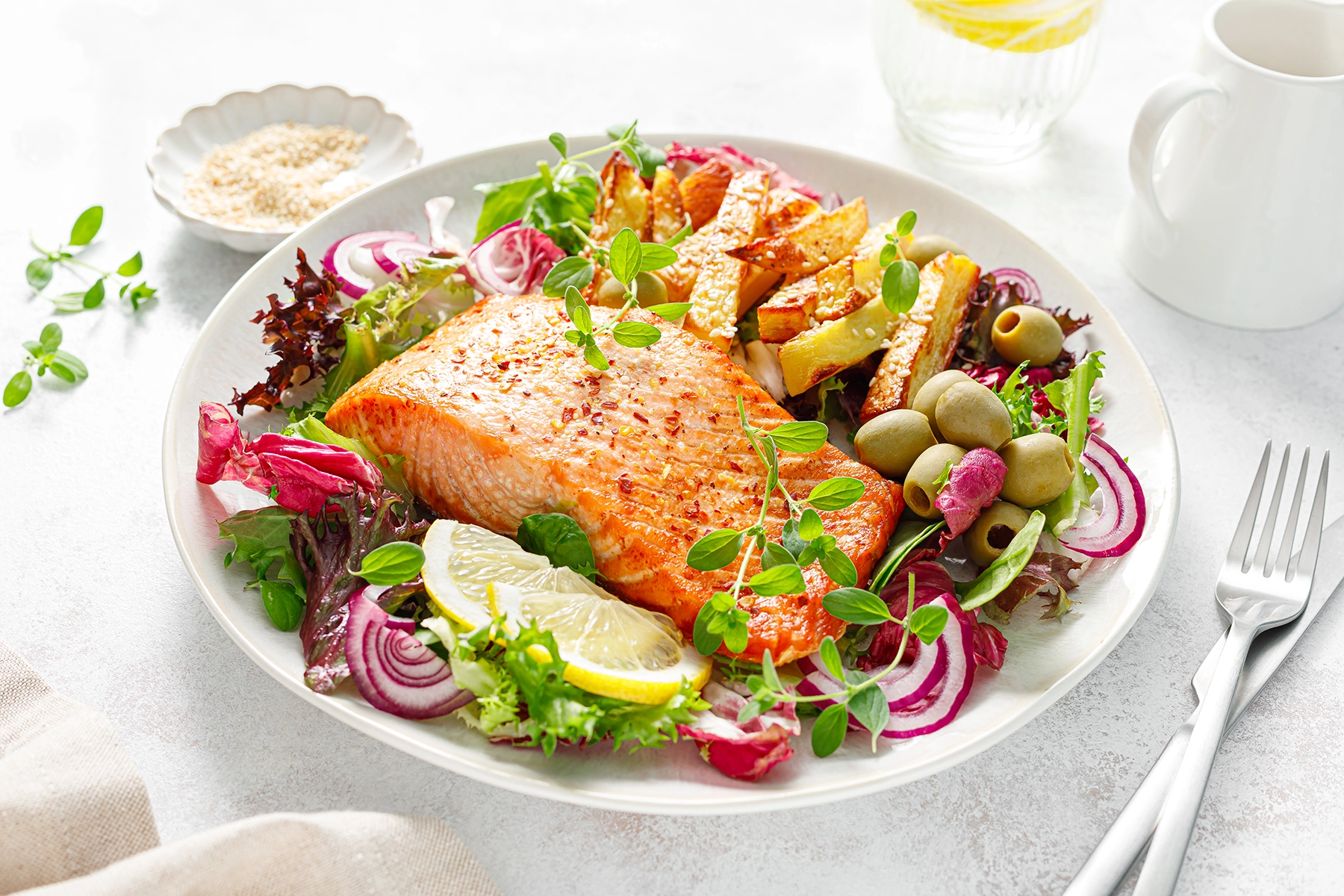Can You Eat Your Way to Less Joint Pain?

Can food ease that pop in your knees and the swelling in your fingers?
Ozlem Pala, M.D., M.P.H., a rheumatologist with the University of Miami Health System, thinks so. She agrees with Hippocrates, recognized as the father of Western medicine, who is believed to have said, “Let food be thy medicine, and let medicine be thy food.” The ancient Greek physician was among the first to espouse that our diet was linked to our health.
“A good diet is important for all aspects of our wellbeing,” says Dr. Pala, “and recent research shows that [for certain conditions] it can also provide some relief from joint pain.”
Many of us blame our stiffness and achiness on aging, the inevitable tax we must pay for living longer.
While this may be true in some cases, Dr. Pala also points the finger at chronic inflammation caused by arthritis.
The two most common kinds of arthritis are osteoarthritis and rheumatoid arthritis, both characterized by stiffness and joint pain/tenderness. However, these two types have different causes.
- Osteoarthritis is the result of the wear-and-tear on our joint cartilage, which worsens with age.
- Rheumatoid arthritis is an autoimmune disease in which our immune system attacks the lining of the joints.
It can be diagnosed in the young (juvenile RA), the middle-aged, and the elderly. RA typically causes swelling and redness more so than OA.
There is not enough evidence to state with scientific certainty that the proper diet will alleviate the symptoms of osteoarthritis, though in OA maintaining a healthy, normal weight is extremely important.
As for RA, “inflammatory arthritis is where we have more evidence to date” that eating the right foods can make a difference, she says.
She recommends someone with RA start by switching to the Mediterranean diet, which is high in vegetables, fruit, whole grains, fish, legumes, and beans.
“I’m passionate about this subject,” says Dr. Pala, who grew up eating this American College of Rheumatology-recommended regimen in Türkiye (formerly known as Turkey), a Mediterranean country.
“What we put into our body has a tremendous effect on our health. You cannot expect good results if you consume highly processed junk food and soda every day.”
Dr. Pala also points to the ITIS diet, a plan the Arthritis Foundation calls the Mediterranean Diet 2.0. This eating regimen is “supercharged” with anti-inflammatory foods and herbs, including green tea, ginger, turmeric with black pepper, chia seeds, flaxseed oil, miso, and unsweetened yogurt. In addition, the ITIS diet excludes certain foods the Mediterranean diets allow, among them wheat flour and gluten.
Dr. Pala has other suggestions:
- Switch from vegetable oil to extra virgin olive oil. Vegetable oil is a highly refined blend of several plant oils that happen to be high in inflammatory fats. Olive oil, on the other hand, is made from pressed olives, and the extra virgin designation means it is the least processed, which helps it keep the most beneficial vitamins, minerals, antioxidants and anti-inflammatory monosaturated fats.
- Eat plenty of colorful fruits and vegetables. That said, Dr. Pala recommends being careful with foods from the nightshade family if you have RA. These foods, such as tomatoes and eggplants, contain solanine. Researchers don’t know if solanine triggers pain, but some research suggests that nightshades may increase inflammation by changing the flora in our gut. “I’m not saying to stop eating tomatoes altogether, but you might want to cut down on how much you consume,” she adds.
- Add nuts and seeds to your dishes and snacks. Almonds, pistachios, walnuts and hazelnuts provide healthy nutrients and fats, but you might want to avoid peanuts, which are high in omega-6. Also, skip additives such as salt or other types of flavoring,
- Feast on fish, particularly cold-water fish such as salmon, sardines and tuna. As a source of omega-3, cold-water fish have been shown to lower inflammation.
- Replace “white” food and grains with whole-wheat bread, brown rice and quinoa, which are good for inflammation and high in omega-3 fatty acids.
- Avoid highly processed foods, red meats, sugar, salt and alcohol. Research increasingly shows that too much of these can worsen inflammation, the main driver of pain.
- Lose weight if you’re heavy. This will ease the pressure on your joints.
- Check with your doctor before taking supplements, as some can interact negatively with other medications you may be taking. No evidence exists that collagen supplements help with joint pain, but Dr. Pala has recommended omega-3 pills for some patients with RA. Even so, “it’s much better to get it naturally, through what you eat.”
In the end, “it’s about finding a balance, about figuring out what helps and what makes [the pain] worse,” Dr. Pala says. “You have to try to do your best to adapt to eating the right foods.”
Your less painful, swollen joints will thank you.
For more information about the ITIS diet, visit the Arthritis Foundation.
Written by Ana Veciana-Suárez, a regular contributor to the University of Miami Health System. She is an acclaimed author and journalist who has worked for The Miami Herald, The Miami News, and The Palm Beach Post.
Tags: anti-aging, Dr. Ozlem Pala, joint pain, orthopedic care in Miami, osteoarthritis, rheumatoid arthritis
